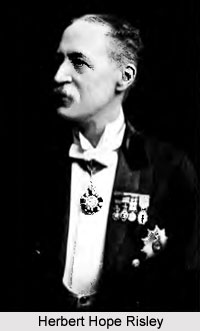 The Indian Press Act 1910 was a legislation propagated during the rule of British Empire in India that imposed stringent censorship and restriction of on all types of publications. The measure was put into effect in order to curtail and restrict the emerging Indian freedom struggle, particularly with the advent of World War I. In the year 1907 Herbert Hope Risley announced that the British administration was beleaguered with a collection of diverse material, some of which were misguided, and seditious. This was declared in reaction to a surge of descriptions that were associated with the Cow Protection Movement. Herbert Hope Risley drafted the main substance of the Indian Press Act 1910 as a result of these concerns.
The Indian Press Act 1910 was a legislation propagated during the rule of British Empire in India that imposed stringent censorship and restriction of on all types of publications. The measure was put into effect in order to curtail and restrict the emerging Indian freedom struggle, particularly with the advent of World War I. In the year 1907 Herbert Hope Risley announced that the British administration was beleaguered with a collection of diverse material, some of which were misguided, and seditious. This was declared in reaction to a surge of descriptions that were associated with the Cow Protection Movement. Herbert Hope Risley drafted the main substance of the Indian Press Act 1910 as a result of these concerns.
The key instruments of control that were imposed by the Indian Press Act 1910 were financial securities. These were susceptible to confiscation and subtraction in case of occurrence of any breach of the remarkably extensive provisions of the legislation. Due to the disorganized socio-political scenario, the British Government of India issued a brand new Press Ordinance in the year 1930. This new Indian Press (Emergency) Act was intended to provide for the enhanced control on all kinds of publications and it revived the provision of the Indian Press Act 1910. In the year 1931, the British authorities imposed the Indian Press (Emergency) Act, which gave comprehensive authority to the provincial government in repressing the propaganda for the Civil Disobedience Movement.
Section 4 (1) of the Act sought to penalize the words, signs or visible representations, that encouraged the commission of any offence or murder or any other cognizable offence. These cognizable offence included hostility or directly or indirectly expressing approval or admiration of any such offence. According to the Indian Press (Emergency) Act, any person, real or fictitious, who had committed or alleged or represented to have committed the offence, would be punished. In the 1932, the Indian Press Act of 1931 was improved in the form of Criminal Amendment Act of 1932.
Section 4 was made all inclusive and extended to incorporate all possible actions that were considered to destabilize the authority of the British Government of India. During World War II (1939-45), the British administration exercised comprehensive authority under the Defence of India Act.



















